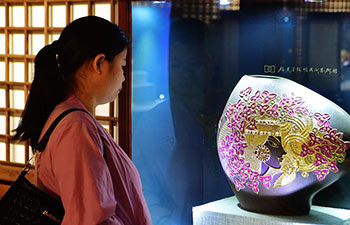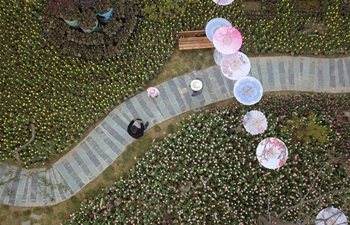WASHINGTON, April 12 (Xinhua) -- With the first-ever black hole image released, a computer science graduate is making headlines because of her crucial contribution of an algorithm that has made the unseeable visible, local media reported.
"Three years ago MIT grad student Katie Bouman led the creation of a new algorithm to produce the first-ever image of a black hole," Massachusetts Institute of Technology (MIT)'s Computer Science and Artificial Intelligence Lab tweeted Wednesday. "Today, that image was released."
The 29-year-old young lady is now an assistant professor of computing and mathematical sciences at California Institute of Technology (Cal Tech).
Inspired by her algorithm proposed in her graduate school work at MIT, researchers created three scripted code pipelines to piece together the picture.
For the past few years, Bouman directed the verification of images and selection of imaging, which formed part of an international effort that involved more than 200 researchers working to unveil the black hole image.
An Earth-sized virtual telescope called Event Horizon Telescope (EHT) linking eight ground-based radio telescopes around the globe "saw" the black hole at the center of massive galaxy M87, 55 million light-years from Earth with a mass 6.5 billion times that of the sun.
The image shows a donut-like structure with a dark central region and a bright ring, which is the black hole's shadow against a disc of glowing gas that falls onto the black hole -- a powerful confirmation of Albert Einstein's general relativity.
Far-flung and compact, black holes by definition has been deemed invisible, so photographing for black holes is no easy task.
This astronomical breakthrough is the strongest evidence to date for the existence of supermassive black holes and opens a new window on the study of black holes, their event horizons, and gravity, scientists said.













